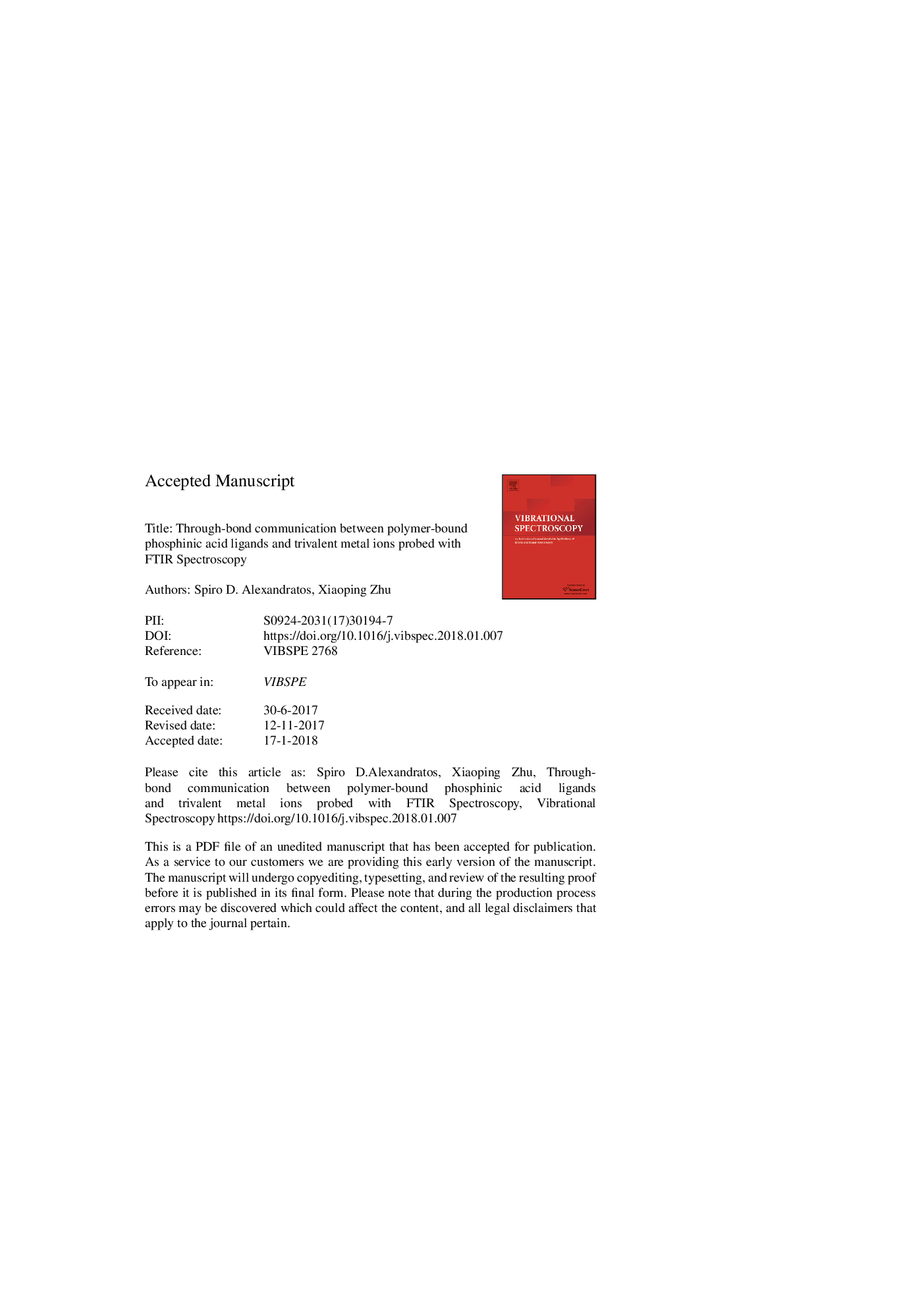| Article ID | Journal | Published Year | Pages | File Type |
|---|---|---|---|---|
| 7690942 | Vibrational Spectroscopy | 2018 | 26 Pages |
Abstract
The binding of trivalent metal ions to immobilized ligands is analyzed to determine the principal type of interaction, the extent of ion exchange, and changes due to through-bond communication. FTIR spectroscopy is found to be a readily accessible means of determining through-bond communication and spectra provide support for a molecular level interpretation of the interaction. The affinity of the phosphinic acid ligand for Al(III), La(III), Lu(III), Fe(III), and In(III) is quantified with distribution coefficients from 0.01-6â¯M nitric acid solutions. High affinities are evident with In(III)â¯>â¯Fe(III)â¯>â¯Lu(III)â¯>â¯La(III)â¯>â¯Al(III). The affinities correlate with the softness parameter and thus the polarizability of the metal ion. The FTIR spectrum of the phosphinic acid has two incompletely separated bands at 1168/1126â¯cmâ1 associated with the PO bond and two similar bands at 967/951â¯cmâ1 due to the PO(H) bond. The bands at 1168/951 and 1126/967â¯cmâ1 are assigned to different hydrogen bonded conformers within the metal-free polymer. Through-bond communication is evident as the extent of metal ion binding increases: the PO and PO bands at 1168 and 951â¯cmâ1, respectively, collapse into a single band between 1040 and 1080â¯cmâ1 representative of PO2(M) while hydrogen bonding among unexchanged P(O)OH ligands gives the bands at 1133 and 981â¯cmâ1.
Keywords
Related Topics
Physical Sciences and Engineering
Chemistry
Analytical Chemistry
Authors
Spiro D. Alexandratos, Xiaoping Zhu,
